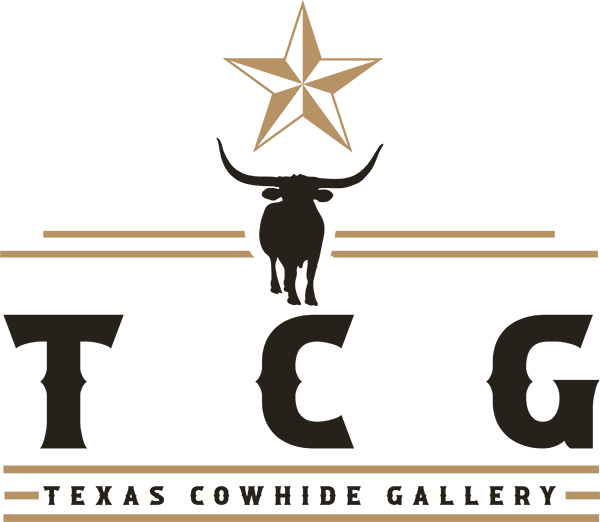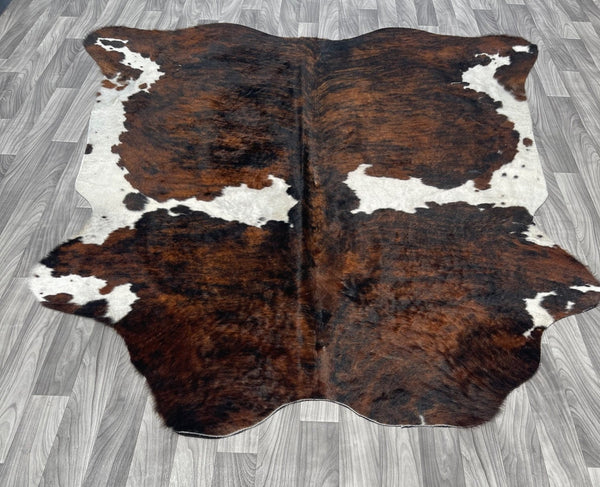The fashion industry is no stranger to scrutiny when it comes to its environmental impact. From fast fashion to leather goods, consumers are increasingly concerned about the ethical and environmental aspects of their purchases. One area of particular concern is cowhide production, which has often been associated with deforestation, water pollution, and animal welfare issues. However, there is a growing movement within the leather industry towards more sustainable and eco-friendly practices. Here, we will explore the eco-friendly practices in cowhide production and the benefits they offer for the environment and consumers alike.
The Traditional Challenges of Cowhide Production
Deforestation and Land Use
One of the foremost concerns surrounding traditional cowhide production is deforestation. In regions where cattle farming is prevalent, vast tracts of forests are often cleared to make way for pastureland. This deforestation has significant consequences for the environment:
- Loss of Biodiversity:Forests are home to diverse ecosystems, and deforestation disrupts these delicate balances, leading to the loss of plant and animal species.
- Carbon Emissions:Trees store carbon dioxide, a greenhouse gas that contributes to climate change. When forests are cleared, this stored carbon is released into the atmosphere.
- Soil Degradation:Deforestation can result in soil erosion and degradation, making it less fertile and productive for future land use.
Water Usage and Pollution
Another major issue in the development of genuine cowhide products is the excessive use of water. The tanning process, a critical step in leather production, is notorious for its water consumption. Tanneries require large quantities of water for soaking, washing, and treating the hides. This poses several problems:
- Water Scarcity:In areas with limited freshwater resources, the heavy water usage by tanneries can exacerbate water scarcity issues.
- Chemical Pollution:The chemicals used in the tanning process, such as chromium, can leach into water sources, polluting rivers and groundwater and posing health risks to both humans and wildlife.
- Energy Consumption:Treating and heating large volumes of water also consumes significant energy, contributing to carbon emissions.
Chemical Usage and Health Risks
Traditional development of genuine cowhide products involves the use of various chemicals, from tanning agents to dyes and finishes. These chemicals can have significant detrimental effects in the long run, some of which include:
- Worker Health:Tannery workers are often exposed to toxic chemicals, leading to health issues such as respiratory problems and skin conditions.
- Environmental Impact:Improper disposal of chemicals can result in soil and water contamination, harming local ecosystems.
- Animal Welfare:Some tanning processes involve harsh chemicals that can have negative effects on the hides, raising concerns about animal welfare.
Ethical Concerns in Cattle Farming
The ethical treatment of animals in cattle farming is another aspect of cowhide production that has drawn criticism. In some cases, cattle may endure conditions that are far from humane and undoubtedly unethical:
- Confinement:Cattle may be subjected to overcrowded and unsanitary living conditions, which can lead to stress and disease.
- Inhumane Slaughter:The slaughter process in some cattle farms may not adhere to ethical standards, causing distress to the animals.
The Eco-Friendly Practices in Cowhide Production

Sustainable Farming and Land Management
One of the cornerstones of eco-friendly cowhide production is the adoption of sustainable farming practices. Traditional cattle farming often involves deforestation and unsustainable land use. However, sustainable farming techniques are making strides in eliminating these issues:
- Rotational Grazing:This practice involves rotating cattle through different pastures, allowing previously grazed lands to recover before they are grazed again. It reduces the need for deforestation and minimizes soil degradation.
- Preservation of Ecosystems:Some producers prioritize preserving natural ecosystems by avoiding deforestation and protecting habitats, which promotes biodiversity and minimizes environmental disruption.
- Reduced Carbon Footprint:Sustainable farming practices can lead to a lower carbon footprint by minimizing the emissions associated with deforestation and land conversion.
Chrome-Free Tanning
Tanning is a crucial step in leather production, but traditional methods often involve the use of toxic chemicals, such as chromium, which pose environmental and health risks. Eco-friendly cowhide production embraces chrome-free tanning techniques:
- Vegetable Tanning:Vegetable tanning uses tannins found in plant sources like oak bark and chestnut. It eliminates the need for toxic chemicals, reducing the risk of water pollution and health hazards.
- Synthetic Tanning Agents:Some eco-conscious producers opt for synthetic tanning agents that are less harmful to the environment while maintaining quality and durability.
Water Management and Recycling
Water consumption and pollution are significant concerns in the traditional development of genuine cowhide products. Eco-friendly practices focus on responsible water usage:
- Water Recycling:Modern tanneries are implementing water recycling systems, significantly reducing overall water consumption and minimizing pollution.
- Efficient Water Treatment:Advanced water treatment technologies ensure that water discharged from tanneries is clean and safe for the environment.
Ethical Sourcing and Animal Welfare
Ethical considerations are vital in eco-friendly cowhide production:
- Animal Welfare:Ethical leather producers prioritize the humane treatment of animals, ensuring they have access to clean water, proper nutrition, and comfortable living conditions.
- Traceability:Producers are increasingly emphasizing transparency and traceability in the supply chain to guarantee that the hides come from ethically raised cattle.
Circular Economy and Product Longevity
Eco-friendly practices extend the life ofgenuine cowhide products:
- Circular Economy:Brands are promoting the repair, reuse, and recycling of leather products, reducing waste, and extending the lifespan of cowhide items.
- Quality Products:Eco-friendly processes often result in higher-quality leather, which is more durable and less likely to wear out quickly.
The Impact of Sustainable Practices on Cowhide Production

Cowhide, a versatile and timeless material, has been a staple in various industries, including fashion, interior design, and upholstery, for centuries. However, the traditional methods of cowhide production have often been associated with environmental degradation, water pollution, and ethical concerns. In response to these challenges, the industry is undergoing a transformation towards sustainable cowhide production practices. Here, we will explore the numerous benefits that sustainable cowhide production brings to the environment, consumers, and the industry as a whole.
Environmental Conservation
Reduced Deforestation: Sustainable cowhide production minimizes the need for deforestation. Responsible land management practices, such as rotational grazing, preserve natural habitats and ecosystems, protecting them from degradation.
Biodiversity Preservation: By avoiding deforestation and protecting natural ecosystems, sustainable cowhide production contributes to the preservation of biodiversity, ensuring that plant and animal species thrive.
Carbon Sequestration: Forests play a crucial role in capturing and storing carbon dioxide, a greenhouse gas responsible for climate change. Sustainable land management helps maintain these valuable carbon sinks.
Water Management
Water Conservation:Eco-friendly cowhide production emphasizes responsible water usage. Water recycling systems in modern tanneries reduce overall water consumption, alleviating pressure on local water sources.
Pollution Reduction: Advanced water treatment technologies ensure that water discharged from tanneries is free from harmful chemicals, mitigating water pollution and protecting aquatic ecosystems.
Ethical Considerations
Animal Welfare:Sustainable cowhide production prioritizes the ethical treatment of animals. Cattle raised under humane conditions, with access to clean water and proper nutrition, ensure the welfare of the animals involved.
Transparent Supply Chain: Traceability in the supply chain guarantees that the hides used in production come from cattle raised ethically, addressing consumer concerns about animal welfare.
High-Quality Products
Durable Leather: Sustainable practices often result in higher-quality leather. The elimination of toxic chemicals in tanning processes and better care for the animals' health can lead to more robust and longer-lasting leather products.
Consumer Trust:Sustainable cowhide production builds consumer trust. Buyers can confidently invest in products that align with their values, knowing that they are supporting ethical and environmentally responsible practices.
Economic Benefits
Cost Efficiency: Over time, sustainable practices can lead to cost savings for producers. Water recycling, reduced chemical usage, and efficient land management contribute to lower operational costs.
Market Growth: As consumers increasingly prioritize sustainability, there is a growing market for eco-friendly products. Brands embracing sustainable cowhide production are well-positioned to tap into this expanding consumer base.
Circular Economy
Reduced Waste: Brands focused on sustainability encourage the repair, reuse, and recycling of cowhide products. This approach minimizes waste and extends the life of leather items.
Environmental Impact: Extending the lifespan of products reduces the need for new raw materials, further reducing the environmental footprint of cowhide production.
Final Thoughts
Sustainable cowhide production offers a multitude of benefits, including environmental conservation, ethical considerations, product quality, economic advantages, and a commitment to the economy. By adopting eco-friendly practices, the cowhide industry is not only addressing long-standing concerns but also ensuring that it remains relevant in a world where sustainability is a paramount consideration.
If you, too, desire to purchase ethically sourced and produced cowhide goods, feel free to reach out to us at Cowhide Gallery. With sustainability as our main concern, we aim to develop genuine cowhide products in the most ethical and eco-friendly ways possible. From cowhide rugs and duffel bags to rarer pieces like tricolored calf hide products, we have a massive catalog. Contact us today to begin browsing our collection.

